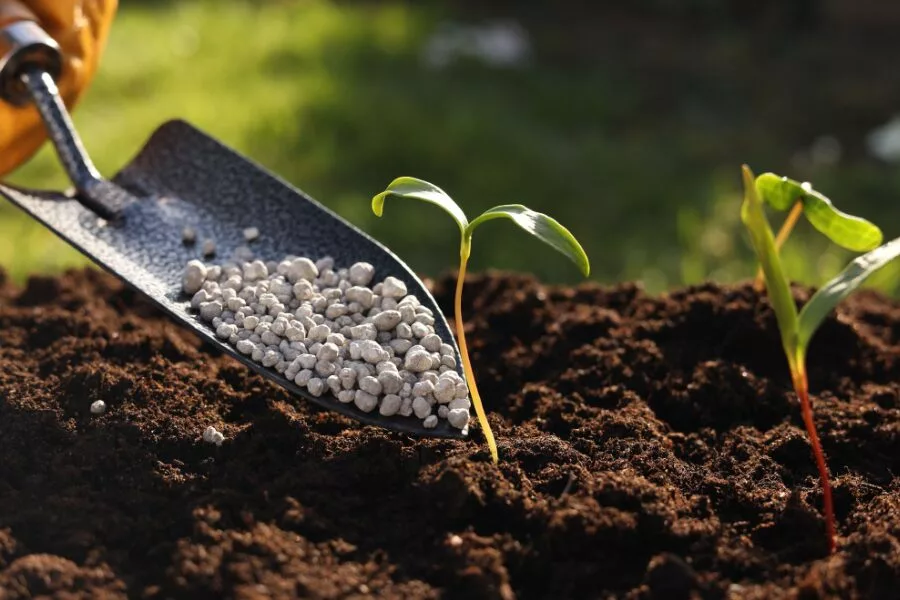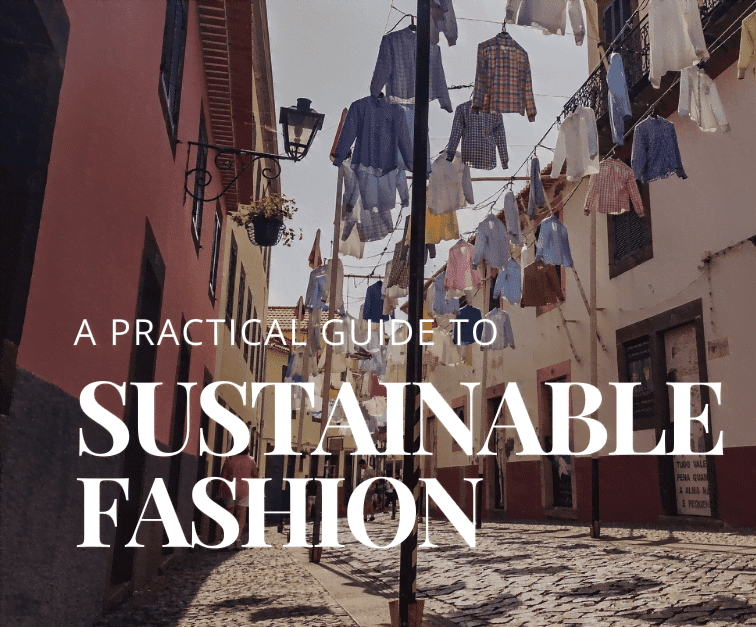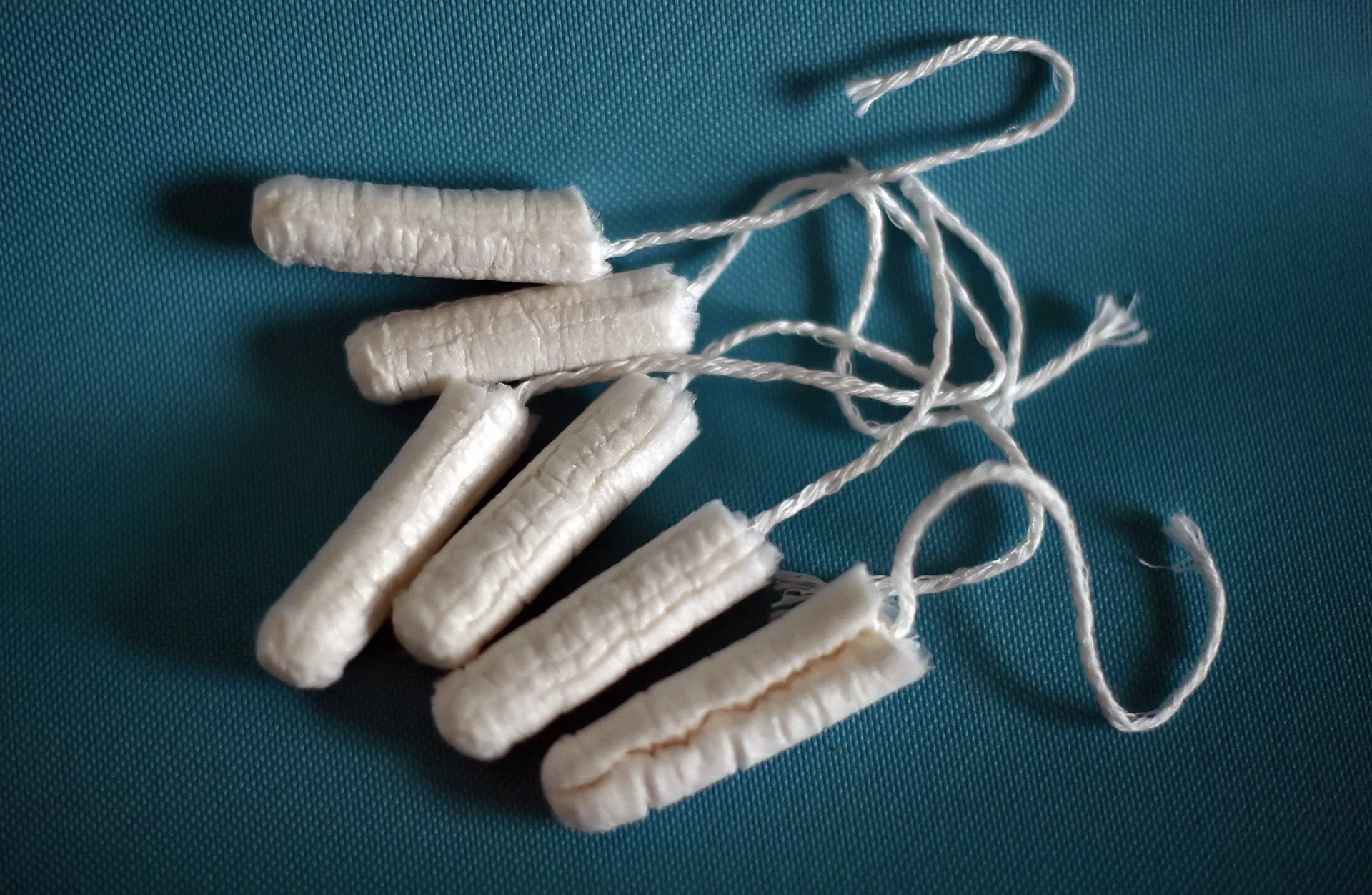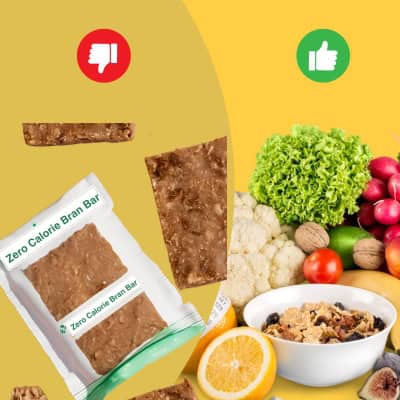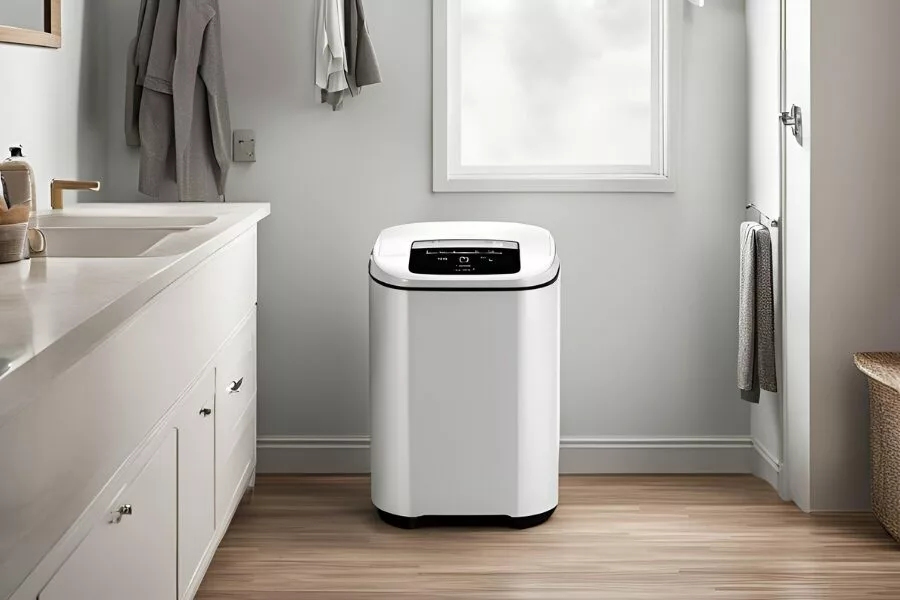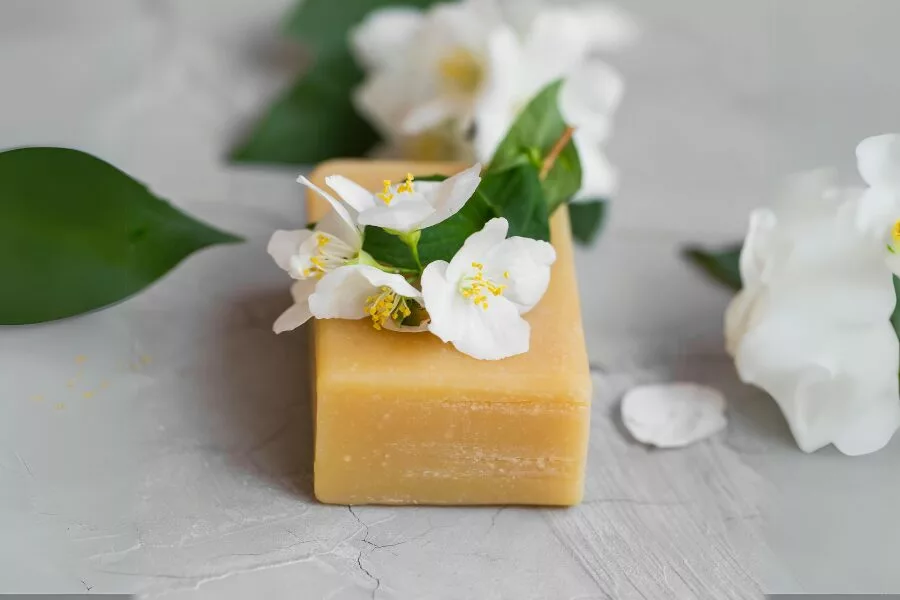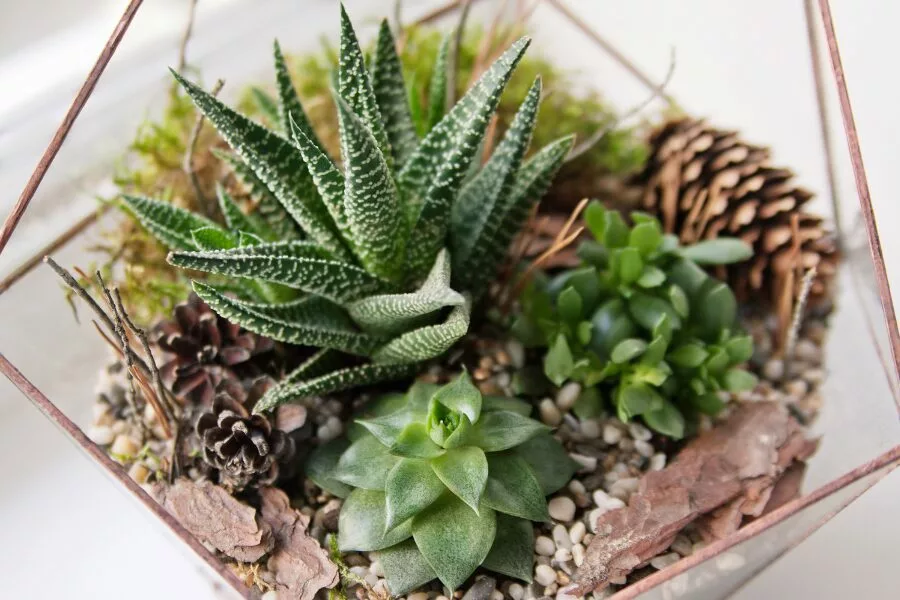Last Updated on August 29, 2024 by Our Editors
Wouldn’t it be nice to have a lawn where your children, grandchildren, and pets can run barefoot, free from harmful chemicals and pesky weeds? With eco-friendly weed and feed, this idyllic scene isn’t just a dream—it’s an achievable reality.
Eco-friendly weed and feed products offer a way to nurture your lawn while protecting its delicate balance. These innovative products are revolutionizing how we approach lawn care, offering a one-two punch against weeds while nourishing your grass to its fullest potential.
Unlock Your Savings with Exclusive Offer Coupons
Save big while shopping for sustainable products! Grab your exclusive coupons today!

But the perks go far beyond aesthetics. By choosing eco-friendly options, you’re creating a safe haven for barefoot summer days, backyard barbecues, and impromptu football games. You’re ensuring that the laughter of children and the buzz of beneficial insects can coexist in harmony. You’re not just maintaining a lawn; you’re nurturing an ecosystem.
This guide will walk you through the benefits, application, and eco-friendly options for weed and feed lawn fertilizers products, helping you achieve that picture-perfect yard while being kind to the environment.
Here’s what you need to know to green up your grass and your gardening habits.
What is Weed and Feed?
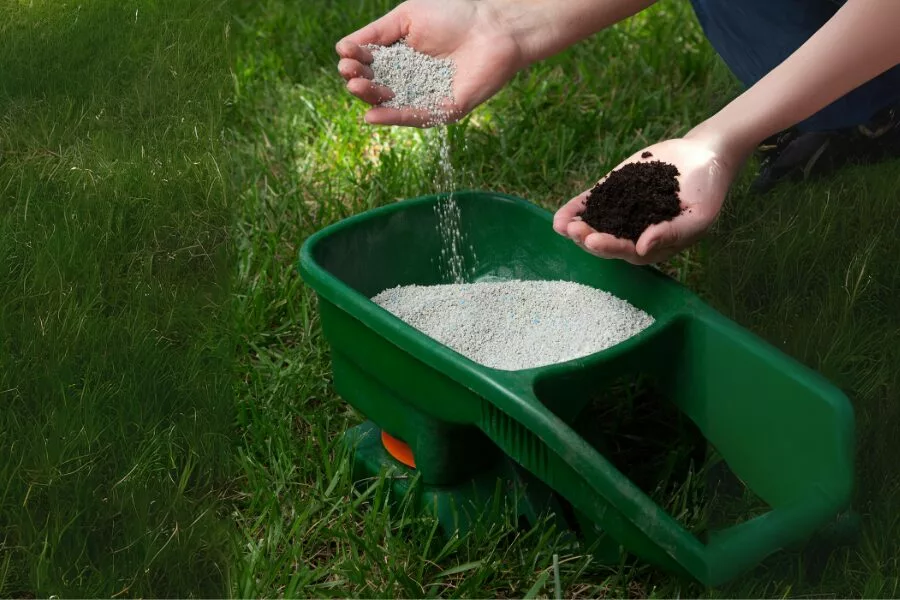
Weed and feed lawn fertilizers are dual-action products that combine herbicides to eliminate weeds, and fertilizers to nourish your grass. Think of them as a dynamic duo for your lawn – a weed feeder that serves a double purpose.
So, instead of buying and applying a weed killer and a fertilizer separately, you can do both jobs with one product. This saves time, effort, and often money.
The good news for eco-conscious gardeners is: that many eco-friendly weed and feed lawn fertilizers options are now available that minimize environmental impact. These products often use organic ingredients or natural compounds, making them a greener choice for your lawn care routine.
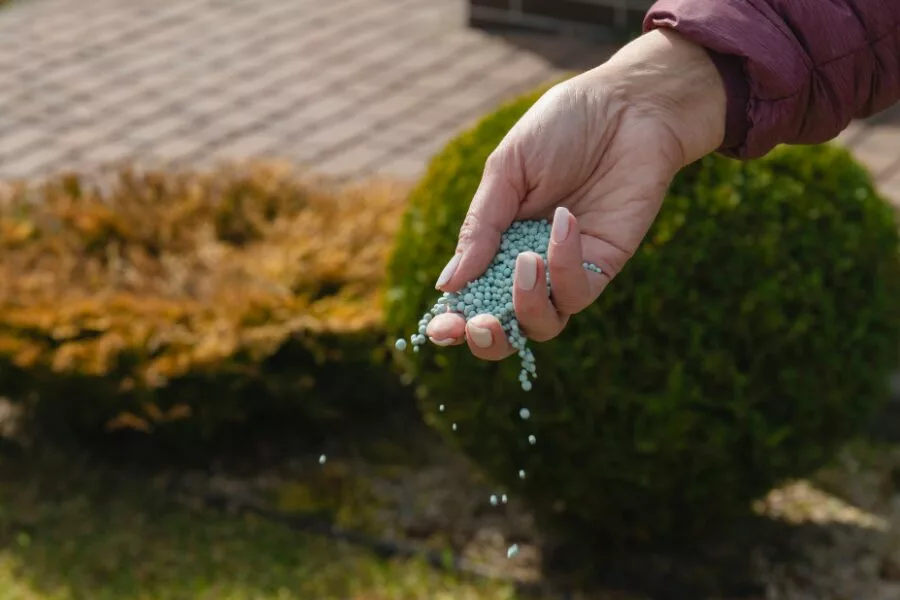
Here’s how eco-friendly weed and feed products differ from conventional ones:
- Organic ingredients: These might include things like corn gluten meal (a natural pre-emergent herbicide), vinegar, or citrus oils for weed control. For the fertilizer component, they use compost, bone meal, or other natural nutrient sources.
- Natural compounds: These are substances that occur in nature and are less processed or synthesized than traditional chemical herbicides and fertilizers. They’re often derived from plants or minerals.
By using natural ingredients, eco-friendly weed and feed products break down more naturally in the environment, reduce the risk of chemical runoff, and are less harmful to beneficial insects and soil microorganisms. Isn’t that great?
That’s not just it! There are many more benefits of using eco-friendly weed and feed lawn fertilizers.
Benefits of Weed and Feed
Let’s discuss the positives of using weed and feed products on soil, grass, time, environment, and money.
Time and Effort Savings
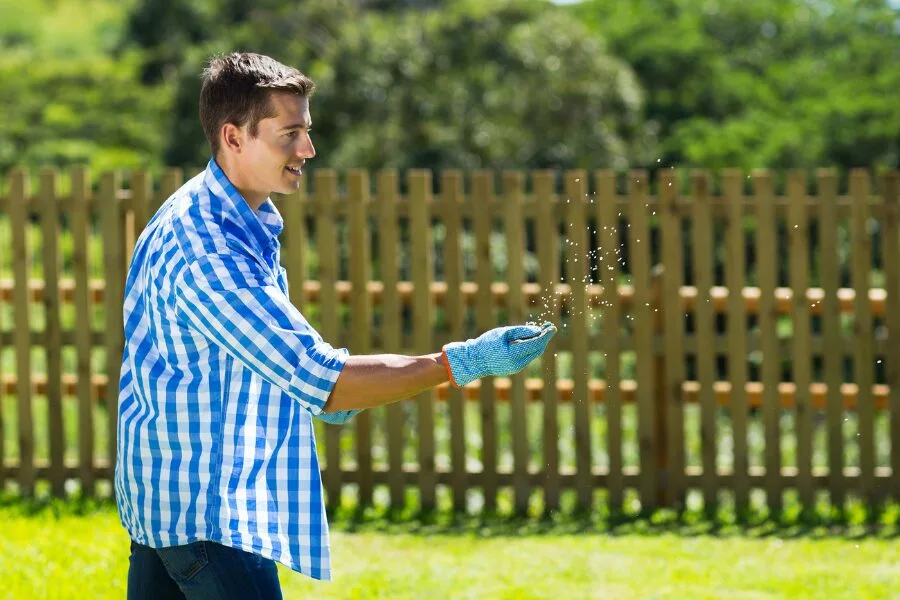
By combining weed feeder, i.e. control and fertilization into one product, you’ll spend less time working on your lawn and more time enjoying it. One application takes care of two essential lawn care tasks.
Lawn Health
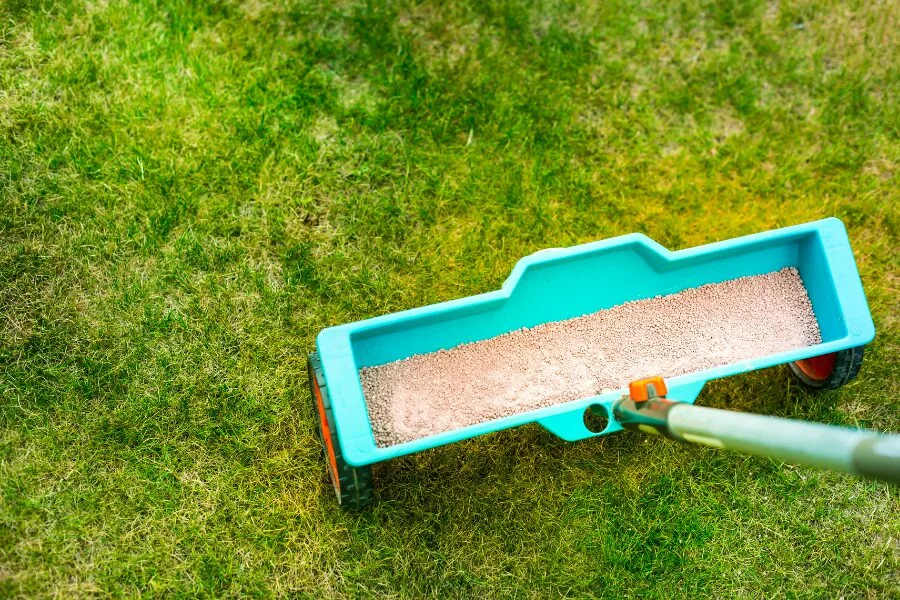
Weed and feed products promote thicker, greener grass by delivering essential nutrients. The fertilizer component provides your lawn with the nutrients it needs to thrive, while the herbicide helps keep pesky weeds at bay.
Improved Soil Structure
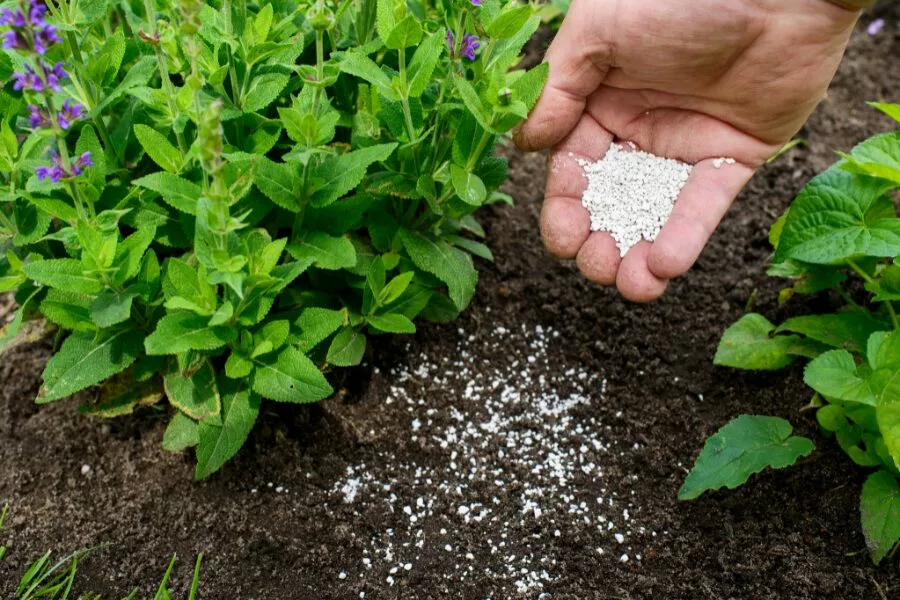
Eco-friendly weed and feed products often contain organic materials that can enhance soil structure. They help improve aeration and water retention, which are essential for healthy root development and overall plant health.
Eco-Friendly Impact

Choosing sustainable weed and feed packs options helps protect local ecosystems, maintain soil health, and safeguard important pollinators. It helps to keep the food chain going and with it all the organisms from the bottom layer in the soil to the top layer in the sky benefits. No, doubt, by using eco-friendly weed and feed, you’ll be doing your part to create a healthier environment beyond just your backyard.
Reduced Chemical Residue
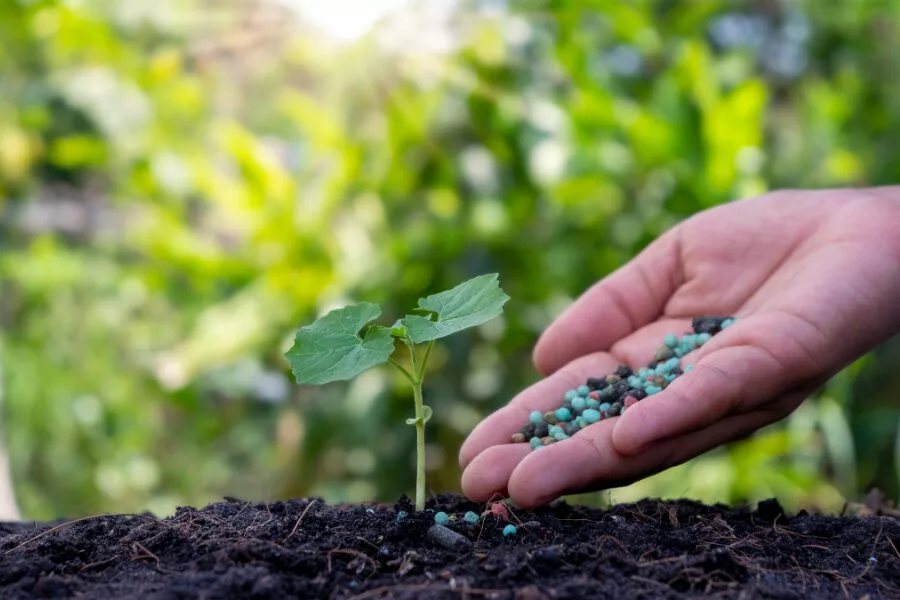
Unlike traditional weed and feed lawn products that may leave harmful chemical residues in the soil, eco-friendly options typically break down more quickly and do not accumulate in the soil. This reduces the risk of long-term soil contamination and supports a healthier ecosystem.
Cost-Effective
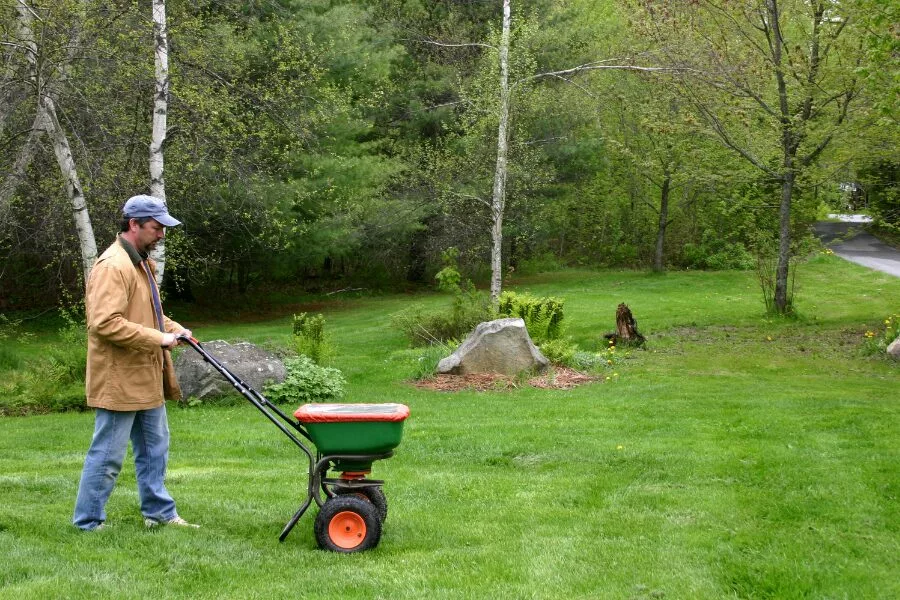
In the long run, natural weed feeders and lawn products are often cheaper than buying separate weed killers and fertilizers to nourish the soil.
Now, like any product you use, everything comes down to its way of use to get the most out of it right? And, weed and feed fertilizers are no different. So, check out the best way to use it, to get the results you wish.
How to Use Weed and Feed for Best Results
Knowing when to apply weed and feed for lawns is crucial for maximum effectiveness.
Timing is Everything!
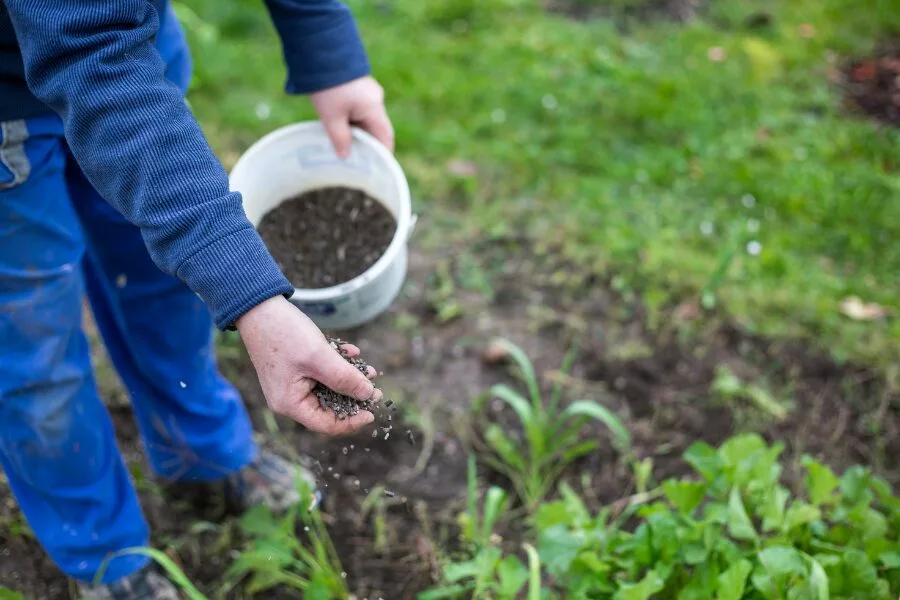
Think of your lawn as Goldilocks – the timing needs to be just right. To answer when to apply weed and feed lawn products, the ideal timing depends on your climate and the types of weeds you’re targeting can be:
When to apply weed and feed in spring?
In early spring, your grass is waking up from dormancy, and applying weed and feed at this time can help prevent weeds from establishing themselves while providing essential nutrients to kickstart growth. Apply when weeds are actively growing, typically when daytime temperatures consistently reach 60-80°F (15-27°C).
When to apply weed and feed in fall?
A second application in the fall helps strengthen your lawn before winter, allowing it to store nutrients and recover from summer stress. This timing can also help control winter annual weeds.
Remember, when to spread weed and feed is just as important as how you apply it. Aim for early spring or fall when weeds are actively growing but not yet dominant. Early morning or late afternoon applications work best, giving the product time to work its magic before the sun gets too intense. Always check the weather forecast and avoid application before rain or during drought conditions.
Application Tips for Success
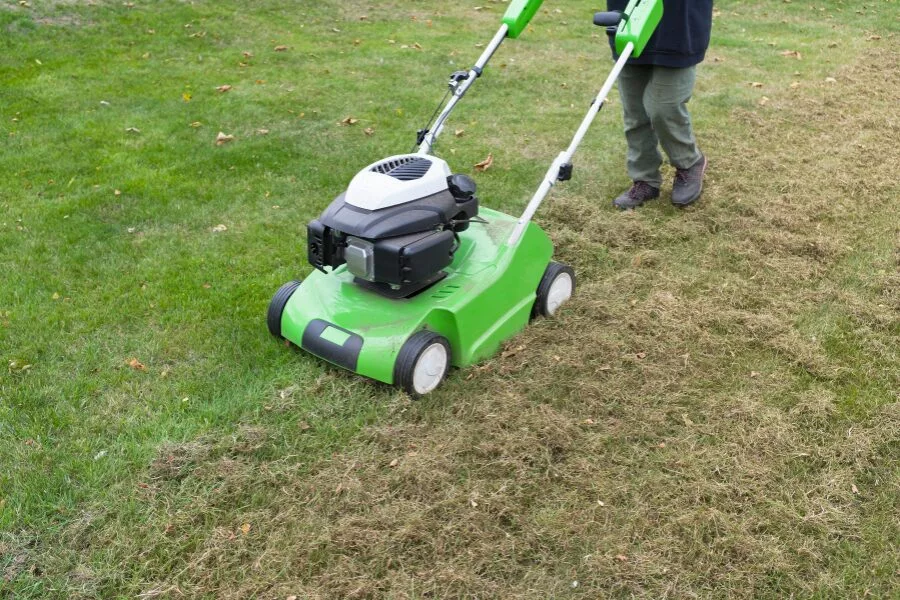
- Prepare Your Lawn: Before applying, know when to use weed and feed, and take some time to prepare your lawn. Mow your grass to a height of about 2-3 inches. This height allows the grass to absorb the nutrients effectively while reducing competition with weeds. Additionally, ensure your lawn is slightly damp—this helps the product adhere better to the grass and improves its effectiveness.
- Follow Instructions: Always read the label for specific application instructions and recommended rates. Different products may have varying concentrations and application methods, so it’s essential to follow the manufacturer’s guidelines to avoid overapplication.
- Watering Guidelines: Once you know when to spread weed and feed, water your lawn lightly after applying to help activate the product. A light watering of about 0.25 inches is usually sufficient. Avoid heavy watering for at least 24 hours to allow the herbicide to work effectively on the weeds. This waiting period ensures that the product penetrates the soil and targets the weeds before being washed away.
- Monitor Weather Conditions: Check the weather forecast before applying. Avoid applying weed feeder before heavy rain, as this can wash away the product and reduce its effectiveness. Ideally, aim for a dry day with no rain expected for at least 24 hours after application.
Knowing when to use weed and feed for lawns can be effective, since over-application can harm both your lawn and the environment. So, what can you do to avoid it and how can you know, enough is enough!
The Goldilocks Principle: Not Too Much, Not Too Little!
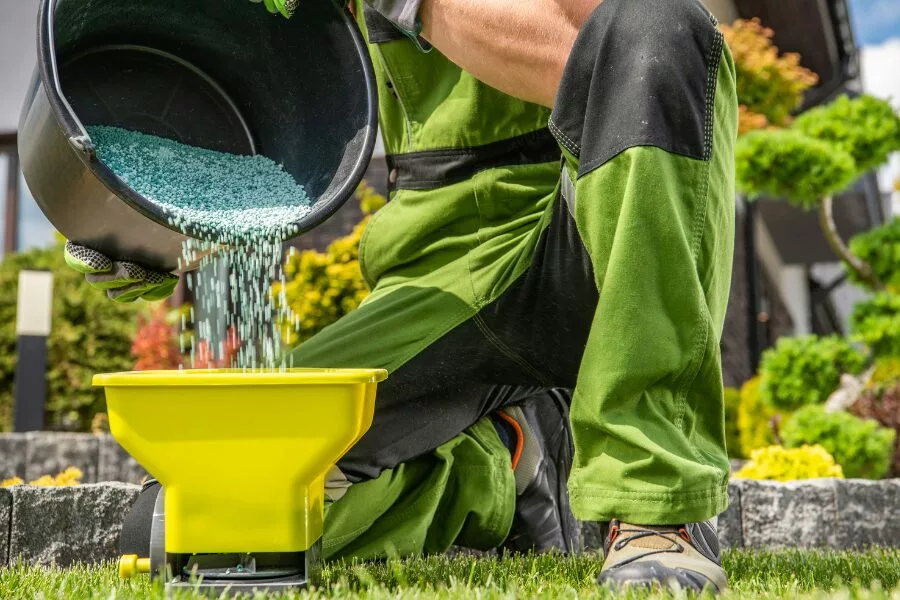
In simple words, your lawn doesn’t need to binge on weed and feed. Simply, stick to recommended application rates because overuse can stress your grass and disrupt the delicate balance of your yard’s ecosystem. Here are some tips to prevent overuse:
- Target Specific Areas: Instead of treating your entire lawn, focus on areas where weeds are particularly prevalent. This targeted approach not only conserves resources but also minimizes the risk of harming desirable grass.
- Use a Spreader: If you’re applying granular products, consider using a broadcast spreader. This tool helps distribute the product evenly across your lawn, reducing the chances of applying too much in one spot.
- Keep an Eye on Your Lawn: After application, monitor your lawn for any signs of stress or damage. If you notice browning or other unusual symptoms, you may have applied too much. Adjust your application rates in the future based on what you observe.
We hope that these tips will help you maximize the effectiveness of your weed and feed for lawns while promoting a healthy, vibrant lawn. But, what about pets and wildlife? Is weed and feed safe for dogs? Let’s find out!
Is Weed and Feed Safe for Pets and Wildlife?

Is weed and feed safe for dogs? We know your furry friends are family. While eco-friendly options are generally safer, it’s best to keep pets off treated areas for 24-48 hours after application of weed and feed products. Think of it as a mini-vacation for your lawn – no paw traffic allowed!
Wildlife Welcome!
Eco-friendly weed and feed products are like putting out a welcome mat for beneficial wildlife. They’re designed to coexist with the creatures that call your yard home, from busy bees to curious birds.
Ready to take your lawn care to the next level? Explore these related articles for more gardening insights:
Alright, let’s see how long does weed and feed take to work so that you know what to expect and when to apply weed and feed fertilizers next!
How Long Does Weed and Feed Take to Work?
When you apply weed and feed to your lawn, you might be eager to see results. Understanding the timeline and what to expect can help you manage your expectations and care for your lawn effectively.
The Timeline
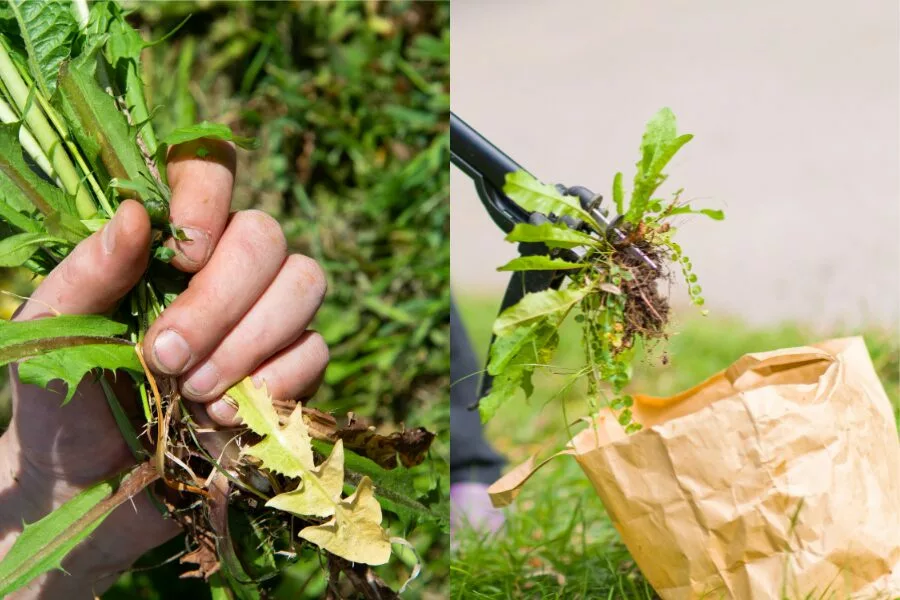
Patience is a virtue, especially in gardening. You’ll start to see results within 2-4 weeks. Here’s what you might notice during this period:
- Weed Control: After a few days, you should start to see the weeds wilting and turning brown. Broadleaf weeds, like dandelions and clover, are usually the first to show signs of distress. However, some tougher weeds may take a bit longer to die off completely, so don’t be alarmed if you don’t see immediate results for every weed.
- Grass Health: Along with weed control, your grass should begin to appear greener and healthier. The fertilizer component of the weed and feed provides essential nutrients that promote growth and recovery from winter dormancy. Within a week, you should notice a richer color and thicker blades of grass.
Now, it’s important to understand that the effectiveness of weed and feed products depends on several factors:
- Grass Type: Different grass types respond to fertilizers and herbicides in unique ways. Cool-season grasses, like Kentucky bluegrass, may react differently than warm-season grasses, such as Bermuda. Knowing your grass type can help you choose the right product and application timing.
- Weather Conditions: Weather plays a significant role in how quickly you see results. Warm, sunny days can enhance the effectiveness of weed and feed, while cool, damp weather may slow down the process. Ideally, you want to apply these products during mild weather conditions, avoiding extreme heat or cold.
- Soil Health: The overall health of your soil can also impact how well your lawn responds to weeds and feed. Healthy soil with good microbial activity will help nutrients from the fertilizer become available to your grass more efficiently.
This also brings us to an important suggestion, know your weed, grass type, and soil before buying or trying any weed and feed fertilizer products. Right?
Consistency is Key!
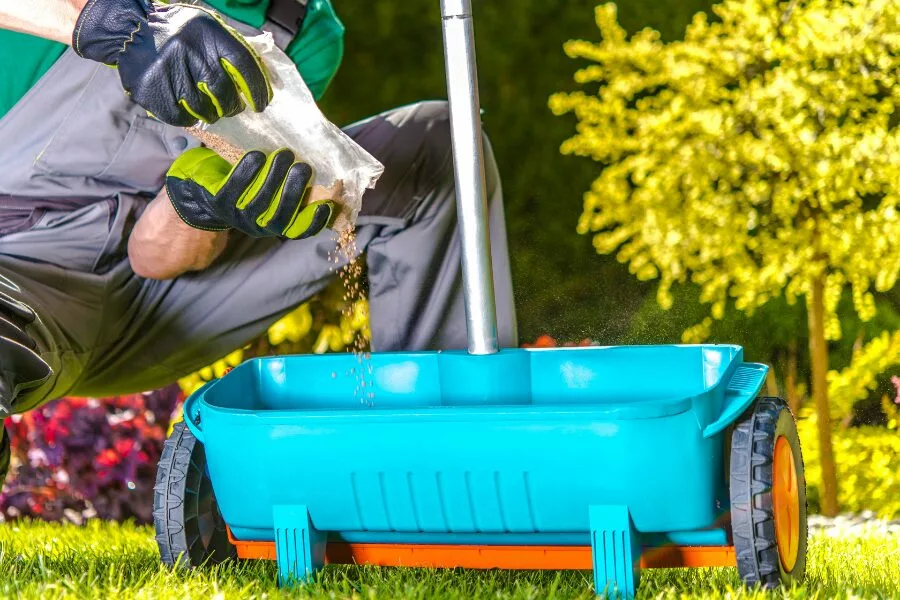
Remember, Rome wasn’t built in a day, and neither is a perfect lawn. Sustainable lawn care is a journey, and it takes time and requires consistent efforts like:
- Follow-Up Routines: After the initial application, monitor your lawn closely. If you notice persistent weeds or areas that aren’t responding well, consider a follow-up treatment or a targeted approach using a post-emergent herbicide.
- Regular Maintenance of Lawn: Keep up with regular lawn maintenance, including mowing and watering. A well-maintained lawn will recover faster and look better after treatment. Mow at the recommended height for your grass type to promote healthy growth and discourage weed establishment.
Just stay consistent with this approach, and you’ll develop a resilient, naturally weed-resistant lawn over time. Now, if you haven’t found the best weed and feed fertilizer yet. Check out the overview of different weed and feed product types below, to help you choose the best option for your lawn care needs.
Best Eco-Friendly Weed and Feed Products
If you’re looking for a more sustainable way to care for your lawn, you’ll be happy to know there are several eco-friendly weed and feed products on the market. These products use natural ingredients and organic formulations to control weeds while nourishing your grass. Let’s take a look at what is the best weed and feed for lawn available online:
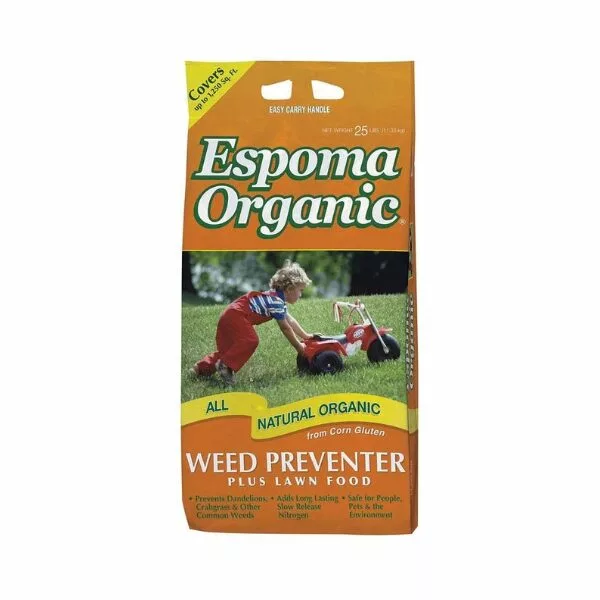
If you’re looking for a reliable and eco-friendly solution to keep your lawn weed-free, Espoma Organic Weed Preventer is a fantastic choice. This pre-emergent weed preventer uses 100% corn gluten meal to effectively stop weeds from germinating. Not only does it work wonders on common weeds like crabgrass and dandelions. It’s also safe for your pets and the environment.
Why Choose Espoma Organic Weed Preventer?
- Natural Ingredients: Made from corn gluten meal, it’s a natural way to prevent weeds without harmful chemicals.
- Slow-Release Nitrogen: It prevents weeds, and nourishes your lawn with slow-release nitrogen, helping your grass stay lush and green longer than conventional fertilizers.
- Easy Application: Simply apply it in early spring before weeds start to grow. It’s easy to use—just follow the application rates on the bag for optimal results.
- Versatile Use: You can use it on established lawns, vegetable gardens, and around established shrubs and trees. This makes it a great addition to your gardening toolkit.
Application Tips:
- Apply 20 lbs. per 1,000 sq. ft. to cover up to 1,250 sq. ft.
- For best results, repeat every 4-6 weeks during the growing season.

Are you looking for a product that targets those pesky broadleaf weeds, and promotes healthy grass growth? GreenView Broadleaf Weed Control Plus Lawn Food is your answer! This product uses iron HEDTA to selectively kill weeds like dandelions and clover without harming your lawn.
Key Benefits:
- Dual Action: It controls weeds and feeds your lawn, ensuring it stays healthy and vibrant.
- Safe for the Environment: With its eco-friendly formulation, you can feel good about using it on your lawn.
How to Apply:
- Apply according to the label instructions for the best results. Typically, you’ll want to apply it during the growing season when weeds are actively growing.

While not entirely eco-friendly, Scotts Turf Builder Weed and Feed offers a more sustainable option compared to many conventional products. It combines the power of the active ingredient 2,4-D to control weeds with a slow-release nitrogen fertilizer to nourish your lawn. Transform your lawn with Scotts Turf Builder Weed and Feed now.
Why Consider This Product?
- Effective Weed Control: Quickly targets and eliminates weeds while promoting grass growth.
- User-Friendly: Easy to apply with a spreader, making lawn care a breeze.
Application Reminder: Be sure to follow the instructions carefully to avoid overuse, which can harm your lawn.

If you want an all-in-one solution, BioAdvanced 5-in-1 Weed & Feed combines weed killer, fertilizer, crabgrass preventer, insect control, and fungicide. This powerful product uses dithiopyr to control crabgrass and other weeds while feeding your lawn.
Why You’ll Love It:
- Multi-Functional: This product simplifies lawn care by combining multiple treatments into one application.
- Balanced Fertilizer: It includes a balanced fertilizer to keep your grass healthy and strong.
Important Note: Always check the label to ensure it’s suitable for your specific grass type.

Designed for golf course fairways but perfect for home lawns too, GreenView Fairway Formula Spring Weed and Feed for lawns uses 2,4-D for weed control and provides slow-release nitrogen for your grass.
Benefits:
- Professional Quality: Achieve a golf course-quality lawn right at home.
- Safe for Most Grass Types: This product is versatile and works well on a variety of grass types.

For those living in the southern United States, Scotts weed and feed pack is specially formulated to meet your lawn’s needs. It controls weeds, feeds the grass, and prevents lawn diseases.
Why It’s Great:
- Tailored for Southern Lawns: Scotts weed and feed is designed specifically for the challenges faced by southern lawns, making it a smart choice for homeowners in warmer climates.

If you prefer a liquid option, Scotts Liquid Turf Builder With Plus 2 Weed Control is easy to apply with a hose-end sprayer. It provides quick results and is safe for most grass types. Get fast, effective results with Scotts Liquid Turf Builder With Plus 2 Weed Control.
Benefits:
- Fast-Acting: You’ll see results quickly, making it perfect for those who want immediate gratification.
- Convenient Application: The liquid formula makes it easy to cover large areas without the hassle of granular products.
Each recommended product is designed to meet different needs, so consider what works best for your lawn. Don’t wait—get started on your lawn care journey today and enjoy the lush, green space you deserve!
For those seeking more natural options, or looking for what is the best weed and feed for lawn, consider these eco-friendly alternatives:
Summing Up!
As we wrap up our journey of knowing about eco-friendly weed and feed packs, we hope you feel empowered to make sustainable choices for your lawn. Every small step taken towards eco-friendly lawn care contributes to a healthier planet for generations to come.
Remember, the road to a greener lawn doesn’t have to be complicated. Start small by trying one of the eco-friendly weed and feed products we’ve discussed. Experiment with different application methods and timing to find what works best for your lawn. Be patient and trust the process—a healthy, sustainable lawn takes time to develop, but the rewards are well worth it.
So, take a deep breath, grab your gardening gloves, and take the first step towards eco-friendly gardening!
Want to read more like this?
Get similar stories and a free sustainability checklist delivered to your inbox.

Like our content?
Get similar stories and a free sustainability checklist delivered to your inbox.

Frequently Asked Questions
What does weed and feed mean?
Weed and feed refers to a type of lawn care product that combines herbicides (which kill weeds) and fertilizers (which nourish grass). This means you can treat your lawn for weeds and fertilize it at the same time, saving you time and effort.
How to apply weed and feed on my lawn?
Apply weed and feed to your lawn when the grass is moist, like after morning dew or light watering. Spread it evenly using a spreader, then water the lawn lightly afterward to help the product settle. Avoid heavy watering, as it can wash away the product.
Is weed and feed safe?
Weed and feed products can be safe when used correctly, but they do contain chemicals that can irritate skin and harm pets if they come into contact with treated areas. Always follow safety instructions on the label, wear protective clothing, and keep children and pets off the lawn for a period after application.
What is bio weed and feed?
Bio weed and feed refers to eco-friendly versions of traditional weed and feed products. These typically use natural ingredients and organic materials to control weeds and fertilize your lawn, making them safer for the environment and for pets and children.
What are the ingredients in weed and feed?
Weed and feed packs usually contain Herbicides, which are chemicals that kill weeds that can be either pre-emergent (preventing weeds from germinating) or post-emergent (killing existing weeds). They also contain fertilizers with nutrients like nitrogen, phosphorus, and potassium that help grass grow healthy and strong.

